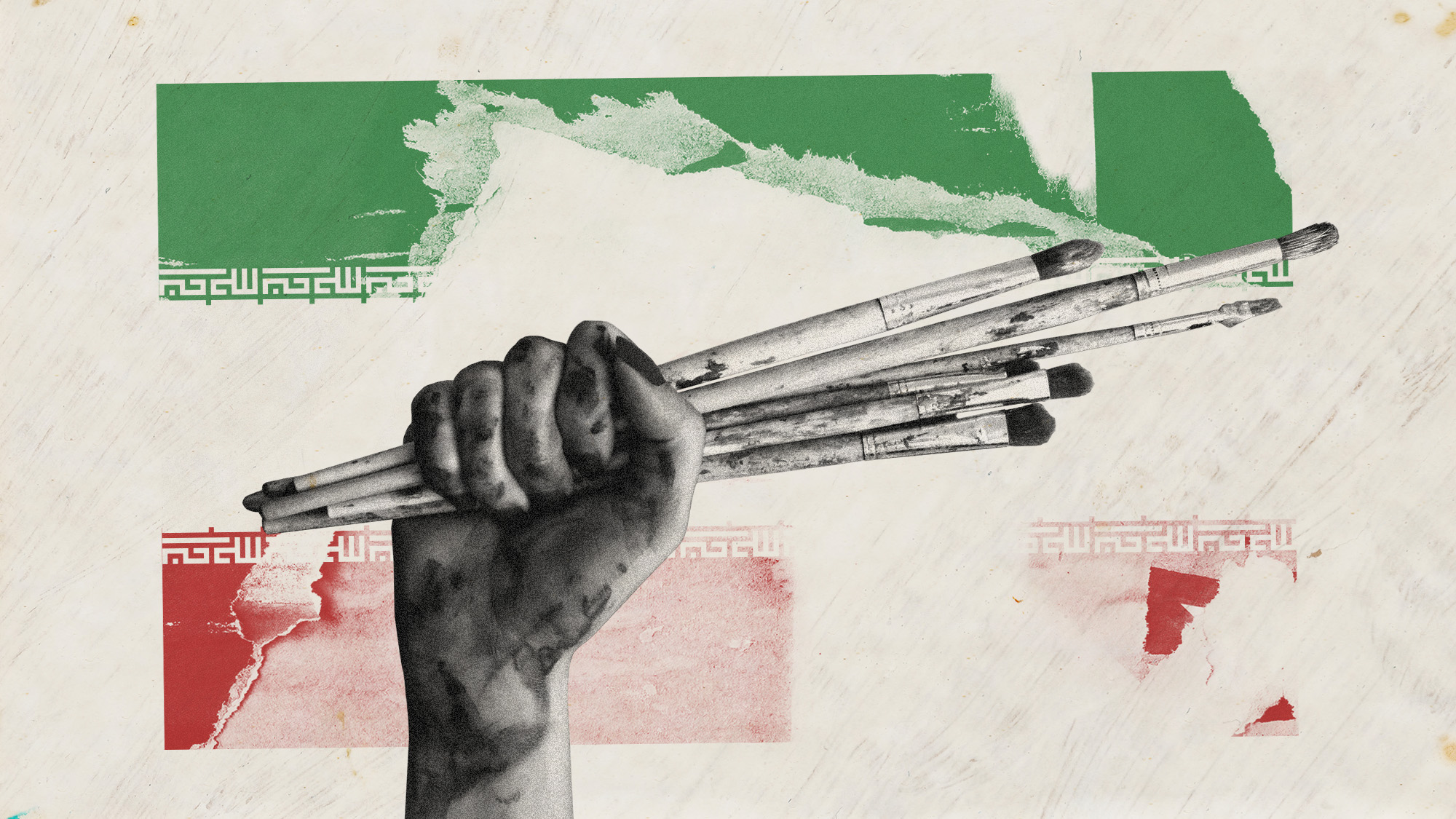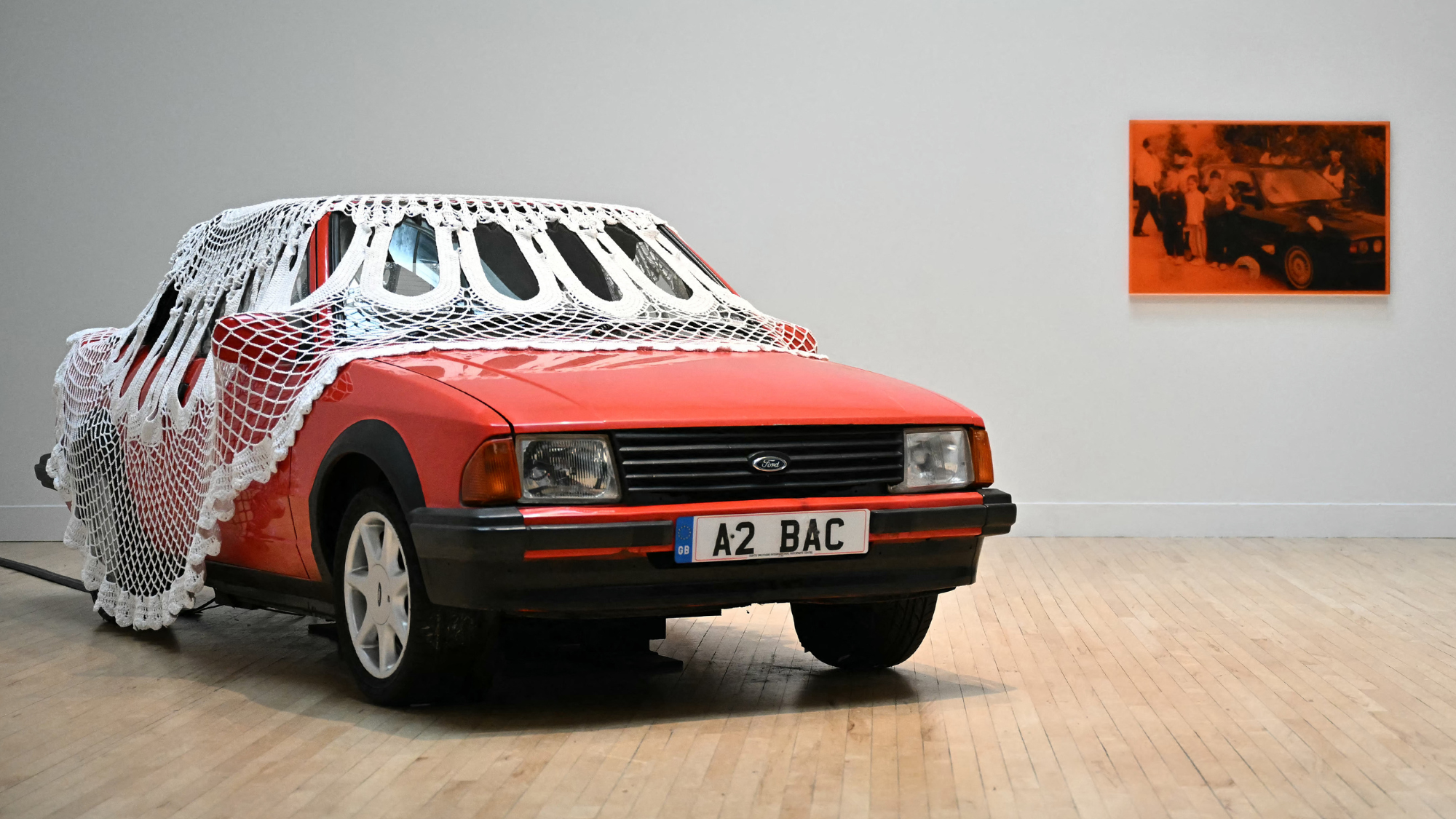Some Time: Richard Deacon at Antwerp's Middelheim Museum
The Turner Prize-winning artist and 'master of abstract sculpture' unveils his first solo outdoor exhibition at the historic sculpture park




In 1993, Antwerp was named European Capital of Culture. In response, the Middelheim Museum, a sculpture park on the outskirts of the city, embarked on a new creative direction by purchasing ten contemporary artworks for a permanent exhibition it called simply New Sculptures. Among them was a newly commissioned piece by British artist Richard Deacon called Never Mind, a large blimp-shaped object made from birchwood.
'The construction of Never Mind came at a period when I stopped making things in one way and was trying to find different ways of working with wood,’ explains Deacon at a gathering at Middelheim Museum a few days before the opening of his new solo exhibition. 'One of the ways I thought was to use it in the same way you might build a barrel or boat, by planking, and I guess I thought that Never Mind could work outside in the same way as wooden boats worked in the sea. I was mistaken in that thought.'
Shortly after it was installed, it transpired that Never Mind could not withstand outdoor conditions. Sunlight caused the wooden planks to expand and crack, which in turn led water to seep in, creating an oven-like environment – complete with steam – as Deacon recalls. It meant that just over a year later, following a couple of restoration attempts, Never Mind was reluctantly put into storage at Middelheim. Twenty-four years on, it was time for another go.
The Week
Escape your echo chamber. Get the facts behind the news, plus analysis from multiple perspectives.

Sign up for The Week's Free Newsletters
From our morning news briefing to a weekly Good News Newsletter, get the best of The Week delivered directly to your inbox.
From our morning news briefing to a weekly Good News Newsletter, get the best of The Week delivered directly to your inbox.

'This new exhibition is the first time I've made a big show of outdoor work anywhere,’ says Deacon. 'The motivation for it is catapulted by the determination to reintroduce Never Mind back into the Middelheim collection. The invitation from Sara [Weyns, Director of Middelheim Museum] was along the lines of: “If we're going to do this reconstruction, which requires resources, energy, expertise and enthusiasm, then we should also do a bigger show to give it some context”’.
Never Mind has now been reproduced in hardy stainless steel. It's a smooth, alien-like creation that appears heavy and solid, yet at the same time light and balloon-like. It encompasses a distinct weightless quality that exists in many of Deacon's works.
Joining Never Mind are 30 other artworks chosen by Deacon and the Middelheim curators. These are carefully positioned around the museum's extensive grounds and pavilions. The artist and the museum's 25-year working relationship is clearly a close one and the process of 'refabricating' the artwork was a labour of love on both sides.

'We invest in the relationships with artists and we try to learn from them,’ comments Weyns on what she calls 'the intensive collaboration' between Deacon and the Middelheim team. 'It's something that sets us apart from most museums.'
A free daily email with the biggest news stories of the day – and the best features from TheWeek.com
The underlying theme of the exhibition, which is called Some Time, is that of refabrication and variation, ideas which have been common throughout Deacon's 40-year career. The title alludes to how sculpture encapsulates time 'because it takes times to make and it also lasts for a period of time’. Deacon also explains that 'resolving the problems of Never Mind did take time', 'so that's the simplest connection.’ he adds.
The artworks chosen for Some Time reflect various stages and phases in Deacon's career, from one of his earliest pieces, When The Land Masses First Appeared (1986), to a collection of surprisingly colourful ceramics and his most recent piece, the stainless steel and drip-paint Big Time (2016). Other highlights include the whittled wood and steel duo I Remember (2012/2013), which take on a new ethereal quality in their location in the Middelheim's semi-open pavilion. Then there's the jaggedy Infinity series (2001–06) dotted near Never Mind, which playfully capture and reflect the light. These particular pieces were originally intended to be floor sculptures, explains Deacon, with the curved nodes slotting and moving together like a jigsaw. In the end, they were welded together as fixed sculptures and took on a completely new character.

'Failures can project you along different exploratory paths, which success doesn't necessarily do,’ he muses. 'Mistakes are made, but I do think you learn from them.'
And so it is with Never Mind, a work which for a long period of time could have been written off as a failure, but now makes a triumphant return. 'Some time' may be an understatement of how long it took to get to this point, but the end-result signals a new achievement in a truly remarkable career.
Richard Deacon: Some Time is at Middelheim Museum in Antwerp until 24 September; middelheimmuseum.be
-
 Nnela Kalu’s historic Turner Prize win
Nnela Kalu’s historic Turner Prize winTalking Point Glasgow-born artist is first person with a learning disability to win Britain’s biggest art prize
-
 Denmark's 'pornographic' mermaid statue is in hot water
Denmark's 'pornographic' mermaid statue is in hot waterUnder the Radar Town will reportedly remove voluptuous Big Mermaid, despite statue being 'arguably a bit less naked' than Copenhagen monument the Little Mermaid
-
 Myth and Marble: Ancient Roman Sculpture From the Torlonia Collection
Myth and Marble: Ancient Roman Sculpture From the Torlonia CollectionFeature The private collection is being revealed to the public for the first time in decades
-
 Sleep like you are in a gallery at these art-filled hotels
Sleep like you are in a gallery at these art-filled hotelsThe Week Recommends Prepare to be inspired
-
 Art and protest in Iran
Art and protest in IranUnder the Radar Regime cracks down on creatives who helped turn nationwide Woman, Life, Freedom protests 'into a cultural uprising'
-
 Turner Prize 2024: has the art world's infamous award lost its power?
Turner Prize 2024: has the art world's infamous award lost its power?Talking Point As the award returns for its 40th anniversary, critics call for a revamp of 'sorry embarrassment of a prize'
-
 Banksy's animal art: method to the mystery?
Banksy's animal art: method to the mystery?In the Spotlight Elusive artist's daily series in London sparks joy – and widespread speculation about its meaning
-
 Marc Quinn's Light into Life: an 'al fresco treasure-hunt' of sculpture at Kew
Marc Quinn's Light into Life: an 'al fresco treasure-hunt' of sculpture at KewThe Week Recommends Massive metallic sculptures dotted across the gardens explore 'links between nature and humanity'

